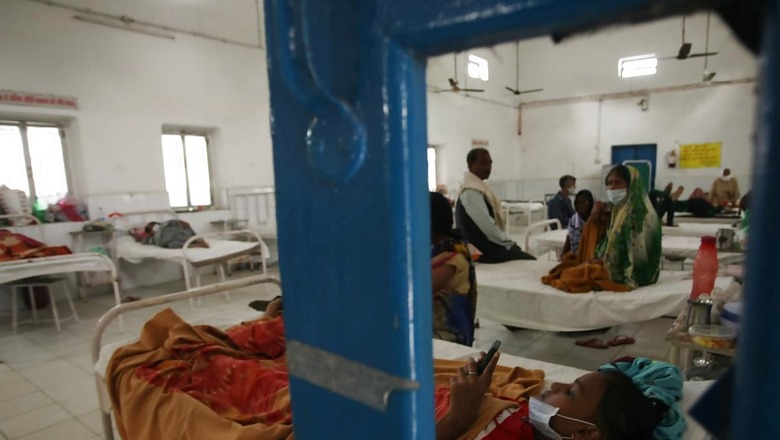
views
India’s latest report on tuberculosis has unveiled a subtle downturn in cases over eight years. Last week, an India TB report indicated that there were approximately 27.8 lakh TB cases in the country in 2023, representing a slight decrease from the estimated 28 lakh cases in 2015.
The annual India TB Report is prepared and published under the National TB Elimination Programme (NTEP) by the Central TB Division of the Ministry of Health and Family Welfare.
Tuberculosis, an infectious bacterial disease, can impact various parts of the human body, with the lungs being the primary target, potentially resulting in fatal outcomes for the patient.
Let’s unpack the successes and challenges of India’s TB elimination efforts – especially when the elimination target has been advanced by five years ahead of the global target of 2030. But it’s important to set the record straight before we begin — India still faces a significant journey towards achieving the goal of TB elimination by 2025. Nevertheless, notable shifts indicate progress at the grassroots level.
Highest Notifications, So Far
India has closed the gap between the incidence (estimated cases emerging each year) and the total number of cases notified to the government: In 2023, India recorded 25.52 lakh notifications – the highest so far.
The data shows that the overall notification of TB cases has improved by 64% over the last nine years, from 2014 to 2023. It shows that the public sector reported 17.08 lakh patients, and the private sector notified 8.44 lakh patients.
Interestingly, Uttar Pradesh saw the highest jump in notifications (by 21% compared to the previous year) followed by Bihar (at 15% compared to the previous year). Uttar Pradesh reported an increase of 51% in notifications from the private sector compared to the previous year.
Also, Bihar is one of the only large states (over 50 lakh population) with more notifications from the private sector than the public sector.
Furthermore, the annual report revealed that the private sector exhibited higher treatment success rates compared to the public sector. “Treatment success rates among patients notified from the public and private sectors were 86.9% and 89.5%, respectively,” it said.
Improvement in Testing
The scale of testing has improved significantly, which is a hugely positive sign. The presumptive TB Examination Rate (PTER) rose from 1,295 per lakh population in 2022 to 1,710 per lakh population in 2023. Again, the trend is encouraging as the PTBER stood at 979 per lakh population in 2019. PTER is a measure of the extent of testing being conducted per unit of population, making it a key monitoring indicator.
However, the program continues to rely heavily on “smear microscopy” as the upfront testing method instead of WHO-recommended Nucleic acid amplification tests (NAAT).
NAAT is considered to be more sensitive. However, in 2023, only 21% of patients received an upfront NAAT test as opposed to the 79% who still received a sputum smear microscopy as their initial diagnostic test.
Of the 1.89 crore persons tested for TB with sputum smear microscopy, 5.78 lakhs were diagnosed with TB, representing a yield of 3%.
The report highlights a recommendation. “Scale-up molecular diagnostic testing to all presumptive TB testing across the country with robust recording and reporting.”
Just Half the Patients Were Tested for Rifampicin
Rifampicin, which belongs to the antimicrobial class of drugs, is a critical first-line drug in the treatment of TB.
According to the India TB Report 2024, 58% of the notified TB patients were checked for resistance against Rifampicin. Conducting Universal Drug Susceptibility Testing is crucial for identifying drug resistance early, enabling patients to receive suitable treatment and undergo further testing to assess resistance to other medications.
A study published last year showed that based on the meta-analysis, the pooled global prevalence of rifampin-resistant TB stands around 9.4%.
Better Use of X-Rays in Screening
Better use of chest X-rays can improve yield from screening. The data shows that in 2023, around 20.5 crore individuals were screened for TB symptoms, of which 21.8 lakh persons were tested and 35,438 were diagnosed with TB. This represents a yield of 17.5 per lakh population, which needs improvement.
The number is low because the screening efforts rely on symptom checking. In active case-finding efforts, the target groups are first screened using a symptom checklist where frontline workers ask people if they have been exhibiting any TB symptoms. However, this poses a challenge. The National TB Prevalence Survey suggests that 46% of those detected with TB in the study were asymptomatic and were diagnosed only because of chest X-rays.
Even the ICMR’s prevalence survey notes that nearly half of the patients do not show symptoms. Hence, the screening efforts need to be broadened. In fact, screening efforts can get a major boost by using AI-based portable devices and mobile X-ray units.
The India TB report also talks about the importance of “scaling up of AI-enabled portable, handheld and mobile X-ray units for screening during active case finding.”
Diabetes Could be the Biggest Risk Factor
The NATBPS in India 2019–21 indicated a higher incidence of TB among survey participants with a Body Mass Index (BMI) less than 18.5 kg per square metre, individuals with diabetes, those engaged in alcohol consumption and tobacco smokers.
India is known as the diabetes capital of the world and, unfortunately, diabetes significantly increases the risk of developing TB by two to three times, consequently elevating the likelihood of multi-drug resistant TB. Moreover, TB treatment tends to be less effective in individuals with diabetes. In 2023, nearly 92% of TB patients underwent diabetes screening, with 7.7% diagnosed with the condition. This concerning relationship between TB and diabetes presents a significant health challenge, particularly in India.
In short, though the goal of eliminating TB from India may still seem distant, the report provides a strong indication of significant progress being made at the ground level.

















Comments
0 comment